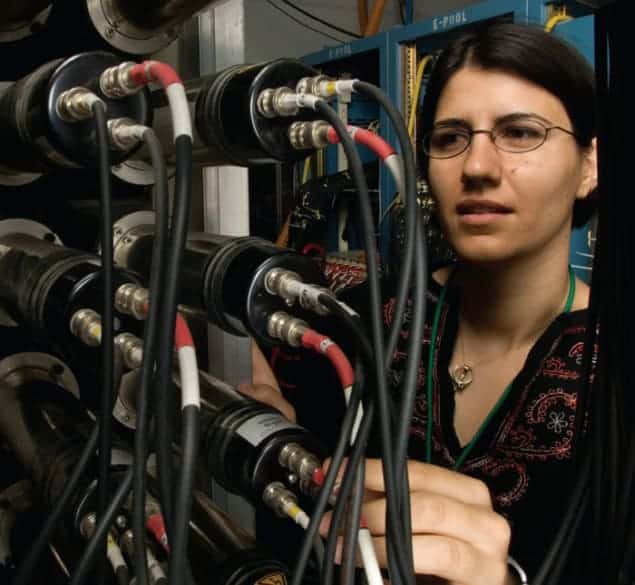
Physicists in the US claim to have witnessed, for the first time, the emission of a neutron pair in the decay of an atomic nucleus. Such “dineutron” decay could extend our understanding of the strong force, which is responsible for holding nuclei together, and the processes taking place in neutron stars.
Nuclear decay occurs when atoms change form in order to become more stable. The best known types are alpha decay, in which a helium nucleus is emitted, beta decay, in which an electron or positron is emitted, and gamma decay, in which gamma rays are emitted. In addition to these are decays involving the emission of a single proton or a single neutron.
However, for decades there has been an interest in rarer forms of decay. In 2002 scientists discovered that iron-45 – which contains nine fewer neutrons than the most stable iron isotope, iron-54 – decays with the emission of two protons. Since then, there has been some evidence that the two protons involved in such emission can be paired up into a short-lived “diproton”. However, this is not clear-cut: the charge of protons forces the particles apart, so they cannot be identified together easily.
In principle, the observation of a dineutron should be less equivocal, because neutrons have no electric charge to muddy the data. Dineutrons have been observed indirectly in neutron-rich helium isotopes, such as helium-6 and helium-8, where some neutrons exist in a “neutron halo” around a central nucleus. Now, however, Artemis Spyrou of Michigan State University and colleagues believe they have detected dineutrons outside a nucleus, during nuclear decay. “This is important on its own since it shows a property of nuclei that we did not know could be possible,” says Spyrou.
Too many neutrons
The obvious place to begin searching for dineutron decay is in nuclei that contain too many neutrons – that is, those nuclei that would want to lose at least two neutrons in order to become more stable. Such neutron-rich nuclei tend to decay one neutron at a time, rather than two at once. But not all nuclei opt for a step-by-step decay: beryllium-16 does not readily emit a single neutron because that would leave a nucleus of beryllium-15, which is more unstable.
Spyrou’s group examined beryllium-16 for dineutron decay. They created the isotope at the National Superconducting Cyclotron Laboratory at Michigan State University by removing a single proton from a boron-17 beam. Immediately, the resultant beryllium-16 decayed into two neutrons. After examining the energy and position information for all three particles – the two neutrons and the remaining beryllium-14 nucleus – the researchers calculated that the two neutrons were emitted together and in the same direction.
Spyrou says that the direction is important for labelling the process as dineutron decay. If the neutrons had been left the nucleus separately, she says, the angle between them would have been almost random.
“Ferreting out “true events
Bob Charity, a chemist specializing in nuclear structure and reactions at Washington University in St Louis, US, thinks the results are impressive. “A single neutron may interact with one part of a detector and in the process scatter and then interact with another part, making it hard to differentiate a single-neutron event from a true two-neutron event,” he says. “The experimental effort…should be praised for ferreting out the two-neutron events from this background of ‘fake’ two-neutron events.”
However, some scientists, including Charity, are sceptical that the dineutron should be considered a well-defined entity. Since the emitted neutrons are already correlated inside the beryllium nucleus’s halo, these scientists say, they are likely to be correlated outside, too – but that does not mean the neutrons are truly bound together.
“I am not convinced that what they see is a new type of particle,” Marek Pfützner told physicsworld.com. Pfützner is a nuclear physicist at the University of Warsaw in Poland and believes that the concept of a dineutron is “a very simplified way to describe the data, which is used a when more detailed and rigorous description is missing”.
Spyrou believes scientists must now understand why the two-neutron decay occurs, and which nuclei exhibit it. “We have already had some indication of similar behaviour in the nucleus oxygen-26, and we plan to study even more neutron-rich systems,” she says. “This is the only way to use this new finding to advance the field and improve our understanding of the nucleus.”
The research is described in Physical Review Letters.



